Accidental Discharge vs Negligent Discharge: What’s the Difference?
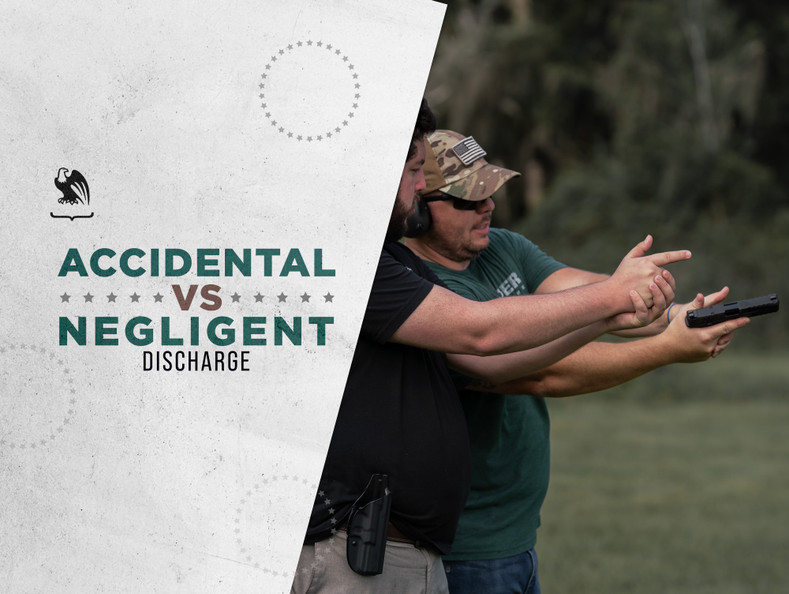
Whether you’ve been watching the news or scrolling through gun forums, you’ve no doubt come across stories in which someone fired a weapon unintentionally. You’ve also likely seen great debate about whether these discharges were accidental or negligent, and whether there even is such a thing as an “accidental” discharge.
While many people use these terms either interchangeably or incorrectly, there actually is a very distinct difference between an accidental discharge vs negligent discharge.
The two terms can be distinguished by one simple fact: a negligent discharge is the result of the improper handling of a firearm and is a chargeable offense, while an accidental discharge is not a result of human error, but rather that of a mechanical or equipment failure.
Either way, both accidental and negligent discharges are preventable most of the time. In this article, we’ll get into detail about what these terms mean and discuss the various ways to prevent such an incident.
What is an ‘Unintentional Discharge’?
Both accidental and negligent discharges fall under the category of “unintentional discharge.” But, what exactly does this mean?
Any time a gun is fired when the user did not want or mean for it to, it is considered an unintentional discharge. This can encompass everything from an older firearm going off when dropped, to flinching and pulling the trigger when you didn’t mean to.
Unintentional discharges can occur due to things like mechanical malfunctions, lack of training, or carelessness. Regardless of why it happened, an unintentional discharge can have serious consequences, including injury, criminal charges, or even death.
That being said, not all unintentional discharges are equal. There is a very big difference between a true accidental discharge and one that happened because the user did something irresponsible or reckless. We’ll talk about that next.
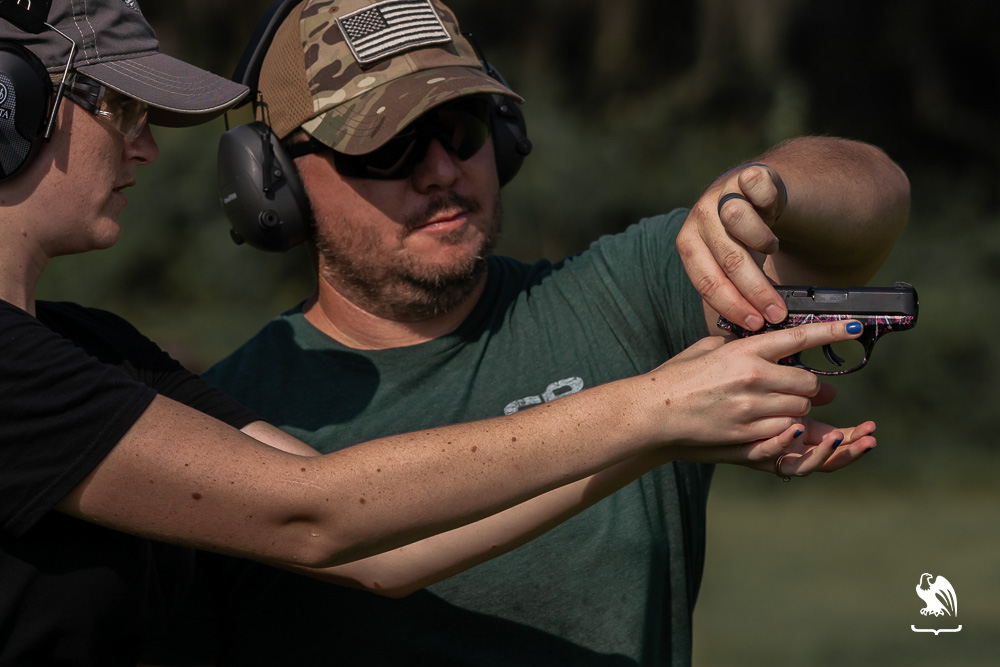
Accidental Discharge vs Negligent Discharge
When a weapon is unintentionally fired, the incident usually falls under one of two categories: accidental or negligent. Though many people use these terms interchangeably, there’s a very big difference between the two.
Because an injury or death resulting from a negligent discharge can result in legal repercussions, it’s important to get these terms right. So, without further ado, let’s get into detail about what these terms mean, and how they differ from one another.
Accidental Discharge
An accidental discharge of a firearm is considered an unintentional shot that occurs for any reason NOT due to error on the user’s part.
More often than not, an accidental discharge is caused by either a mechanical failure or an equipment malfunction. An older firearm that’s not drop-safe, for example, or a holster with a poorly designed trigger guard that allows a foreign object to reach the trigger.
Frankly, true accidental discharges are incredibly rare. The vast majority of the time, unintentional discharges are caused by improper handling of a firearm, which is considered a “negligent discharge.”
Negligent Discharge
The negligent discharge of a firearm is defined as an unintentional shot that was caused by mishandling a gun.
Though not done on purpose, negligent discharges are caused by recklessness or irresponsibility on the user’s part, and the shooter is responsible for any resulting consequences.
That means that in the event a negligent discharge results in property damage, injury, or death, the user could be held at fault. This is especially true in a military or law enforcement context, where a negligent discharge is a criminal offense, and could result in charges. Fortunately, proper gun safety and trigger discipline can prevent negligent discharges 100% of the time.
How Common Are Unintentional Discharges?
Whether negligent or accidental, an unintentional discharge is incredibly dangerous. But how common are these incidents, really, and are they a cause for concern?
Unfortunately, it’s impossible to know the exact number of unintentional discharges that occur every year, as many of these events go unreported. So, even though we can talk about the number of reported incidents, it’s important to keep in mind that the actual figure is likely much, much higher.
According to the National Safety Council, approximately 5% of all gun deaths in the United States were classified as “unintentional” in 2021. And in 2022, over 1,633 people were either killed or injured as a result of an unintentional shooting in the U.S., according to the Gun Violence Archive.
Even one injury or death caused by an unintentional discharge is too many. Fortunately, the vast majority of these incidents can be prevented by practicing proper gun safety, storage, and maintenance.
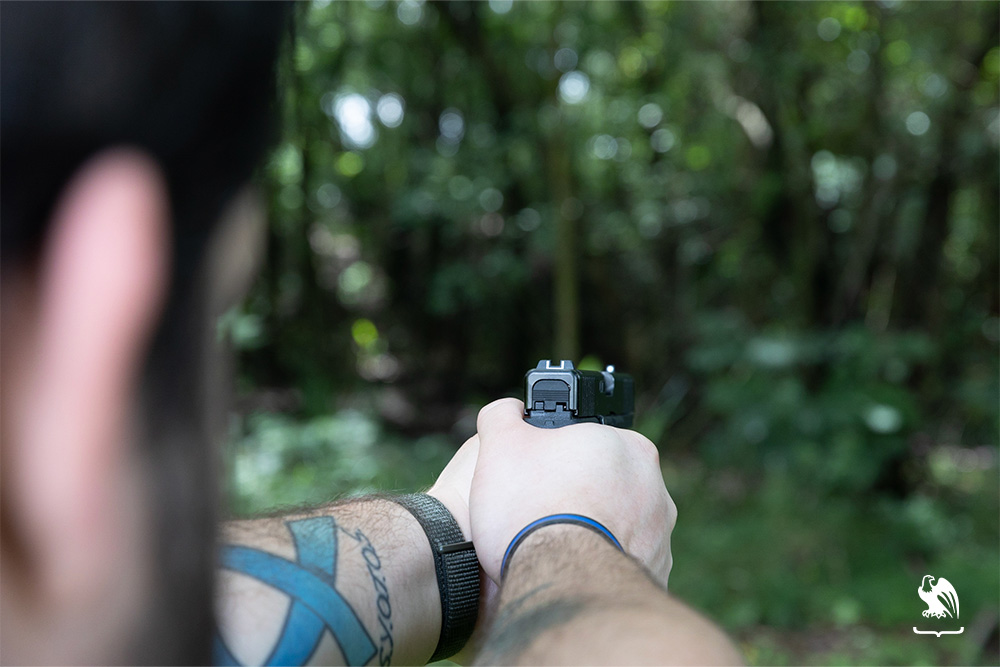
How to Prevent an Unintentional Discharge
Hundreds of people are killed every year because of the mishandling of a firearm, and practicing proper gun safety dramatically reduces the risk of accidentally shooting yourself or someone else.
Everything from the safe handling of a firearm to carrying a holster with a proper trigger guard can help prevent an unintentional discharge. Let’s break it down:
Practice the Four Rules of Firearm Safety
By far the best way to prevent an unintentional discharge is to ALWAYS practice the four rules of gun safety – even when you’re sure your weapon is unloaded. By religiously following these rules, you can guarantee the safety of yourself and those around you, even in the event of an accidental discharge.
1. Always Keep Your Gun Pointed in a Safe Direction
This is the number one most important rule to remember any time you’re dealing with firearms: ALWAYS keep guns pointed in a safe direction. No exceptions. And yes, that includes when they’re unloaded, when you’re cleaning them, when you’re training, and any other “when” you can think of.
The reason this rule is such a critical one to follow is twofold. First, keeping weapons pointed in a safe direction ensures that even in the event of an unintentional discharge, nobody gets hurt. And second, even when a gun is unloaded and it is impossible for it to go off, practicing this rule reinforces good habits that will help you handle guns safely all the time.
2. Keep Your Finger Off the Trigger Until You’re Ready to Shoot
As we’ve already established, a true “accidental” discharge is incredibly rare. Guns don’t just go off for no reason, which means that someone or something has to touch the trigger. In fact, many unintentional discharges are the result of someone flinching and squeezing the trigger without meaning to.
It’s for that reason that the second most important rule of gun safety is to always keep your finger off the trigger until you’re absolutely sure you want to shoot. If your finger is safely placed outside the trigger guard, you can eliminate the risk of accidentally squeezing it if you are startled or trip.
This sounds like an easy rule to follow, but in practice, it’s harder than you’d think. That’s why it’s so critical to train consistently and avoid touching the trigger unless you’re ready to pull it – even if the gun is unloaded. Again, we tend to revert to our habits in the heat of the moment, so it’s important to reinforce good ones!
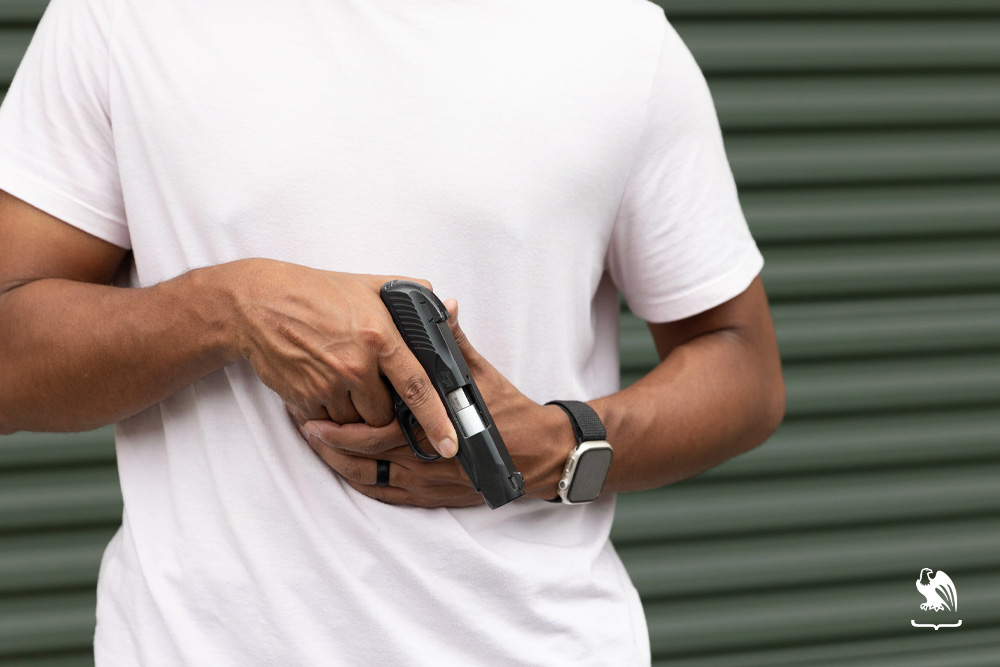
3. Be Sure of Your Target and What Lies Beyond It
Another great firearm safety rule to live by is to be absolutely sure of what you’re shooting at AND what lies beyond it before ever pulling a trigger.
Whether in a self-defense situation or going outside for some target practice, positively identify your target before you fire so you don’t accidentally hit something you didn’t mean to.
And, because bullets travel so far and so powerfully, this rule includes consciously thinking about what may be located wayyyy past your target or what could be on the other side of a wall or other visual barrier to avoid collateral damage.
4. Treat Every Gun Like It’s Loaded
This is the golden rule of firearm safety: always treat every gun as though it is loaded, even when you know for a fact that it’s not.
While it may seem ridiculous to treat an unloaded firearm like it’s loaded, even after you’ve triple-checked it, there are some very good reasons for this rule. First – and we know we sound like a broken record here – practicing good safety habits reinforces them, and they become the default in a stressful situation.
Another great reason is that if you treat all guns like they’re loaded, you’ll never be unpleasantly surprised by one that is. As crazy as it sounds, it’s not all that uncommon for someone to think they’re handling an unloaded weapon when, in fact, there’s still a round in the chamber or someone loaded the gun unbeknownst to you.
At the end of the day, following this rule can prevent the vast majority of unintentional firearm tragedies. If we assume every gun is loaded at all times, and handle them with the intention and respect they deserve, negligent discharges can be avoided entirely.
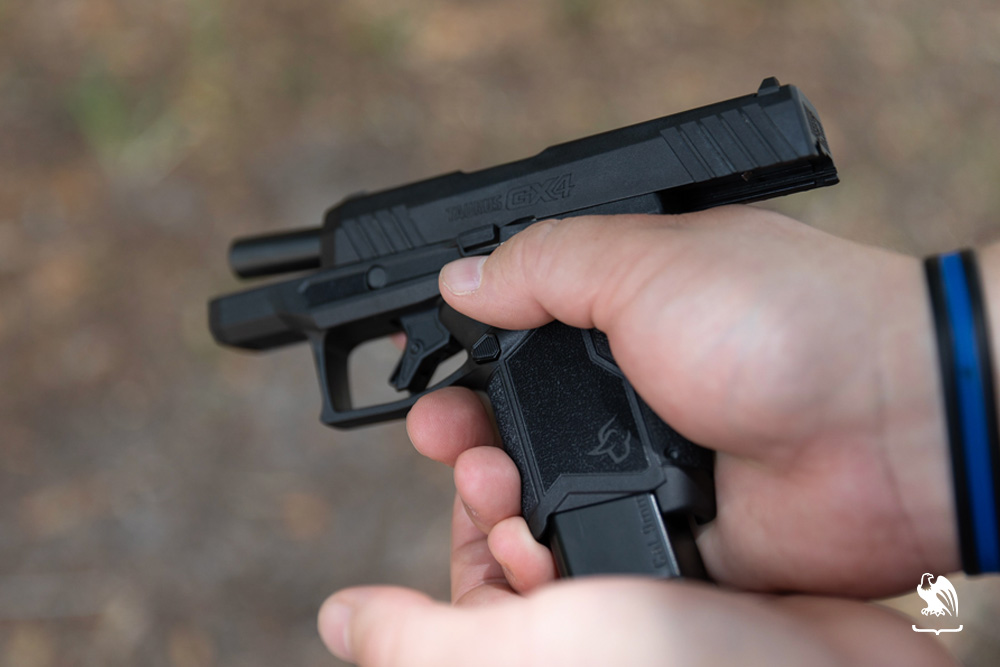
5. BONUS: Never Handle a Gun While Under the Influence
There’s a reason that guns are banned in places like bars – handling firearms while under the influence is a recipe for disaster.
Unfortunately, many accidents involving firearms also include drugs or alcohol. When your judgment is impaired, you’re more likely to slack on your gun safety and the risk of an unintentional discharge dramatically increases.
So, our fifth and final safety rule is pretty straightforward: never, EVER shoot, clean, or otherwise handle a firearm while under the influence. It’s just not worth the risk.
Use a Proper Holster
Despite what you see in a lot of movies, sticking a gun into your waistband without a holster is not just a bad idea, but a terrible one. When your gun is unsecured, you dramatically increase the odds that it will slip and fall, or that you could accidentally engage the trigger.
But not all holsters are created equal. The entire point of a holster is to secure your firearm so you can carry it safely. And if you carry a holster that isn’t well-designed, it defeats the purpose entirely.
The most important safety feature to look for in a holster is a completely covered trigger guard. A lesser holster puts you at risk by leaving room for foreign objects to access the trigger, which could cause an accidental discharge.
At Vedder Holsters, all our holsters are designed with a complete trigger guard that fully encloses the trigger, so you never have to worry. You can check out our entire selection of IWB, OWB, and pocket holsters here.
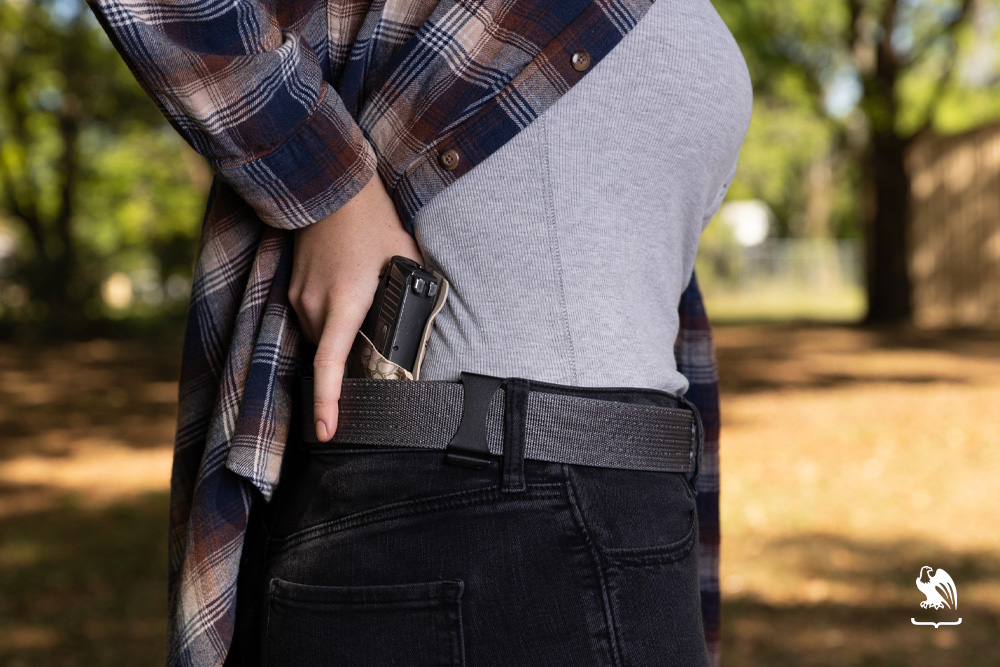
Store Firearms Securely
Sadly, adults aren’t the only victims of unintentional discharges. And the vast majority of incidents where children are injured or killed by a negligent discharge happen because they or another child discovered an unsecured weapon.
As gun owners, it’s our responsibility to ensure our weapons are properly secured and stored in a place that’s inaccessible to unauthorized users – whether that’s your curious brother-in-law or the kid who walks your dog.
The best way to store guns when not in use is in a safe or lockbox. We’ve got some great recommendations over on our Resources Page for safes of all sizes. It’s a small step, but an important one when it comes to safety – especially with kids in the house!
Triple Check Before Cleaning
Next to reholstering, cleaning your gun is when you’re at most risk of a negligent discharge. Unfortunately, many accidents surrounding firearms happen when someone is cleaning their weapon while there’s still a round in the chamber.
Because people don’t generally do this on purpose, it’s crucial that you triple-check that your gun is unloaded before you begin cleaning. We recommend even going so far as to rack the slide several times to ensure a round isn’t stuck in the chamber (it does happen!).
It might feel like a waste of time, but it’s a necessary step in ensuring your own safety and that of your family and neighbors.
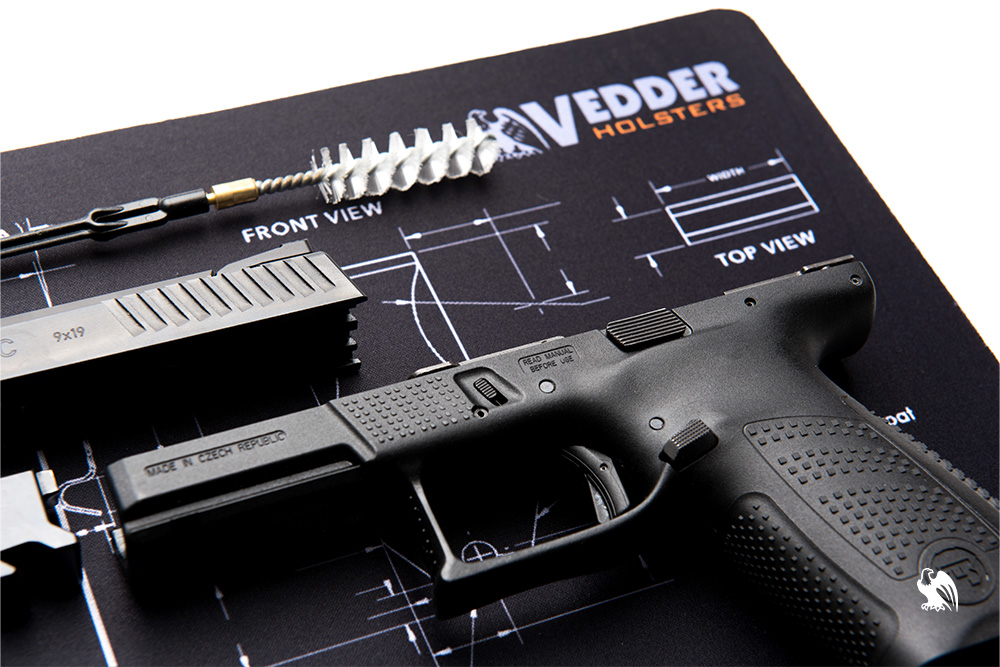
Train Consistently
Finally, training and taking classes is by far one of the best ways you can avoid an unintentional discharge.
So many unfortunate incidents involving firearms have to do with poor safety habits and lack of training. Taking a class and following it up with a consistent training schedule can help you build the skills and muscle memory needed to safely handle a firearm, clear jams, and exercise trigger discipline.
You can easily find a course near you by searching through the USCCA, the NRA, or by visiting your local shooting range. You can also practice dry fire training at home in between courses to practice and keep up your skills.
Summary
There has always been a lot of controversy surrounding the concept of an accidental discharge vs negligent discharge. While some use the terms interchangeably, others argue that there is no such thing as an “accidental” discharge at all.
Essentially, a negligent discharge is one that occurred due to improper handling of a firearm, while an accidental discharge is one that is not caused by user error, such as a mechanical or equipment failure.
At the end of the day, whether negligent or accidental, an unintentional discharge can result in some painful consequences. Practicing proper gun safety, consistent training, and using a proper holster can all help prevent a tragic incident.
If you’re in need of a new IWB, OWB, or pocket carry holster that prioritizes safety, visit our Holsters by Gun Model page for Kydex holsters that are custom-made for your weapon of choice.
Interested in items beyond holsters? Check out our Resources Page for links to recommended products like lights, lasers, first aid, maintenance, and more, and browse our selection of apparel, and accessories at our website, vedderholsters.com.
To stay up-to-date on all the latest Vedder Holsters content and offerings, check out our blog and follow us on Facebook, Instagram, and Twitter. And be sure to visit our sister company, GeoGrit, for all your American-made minimalist wallet needs.

